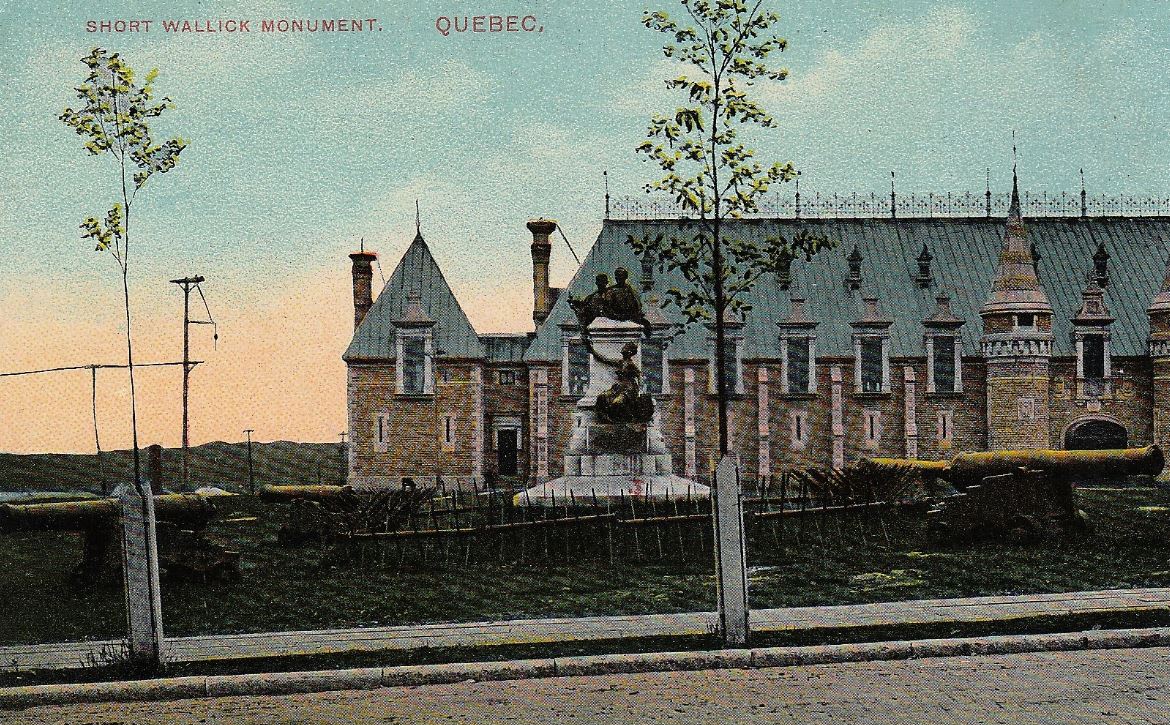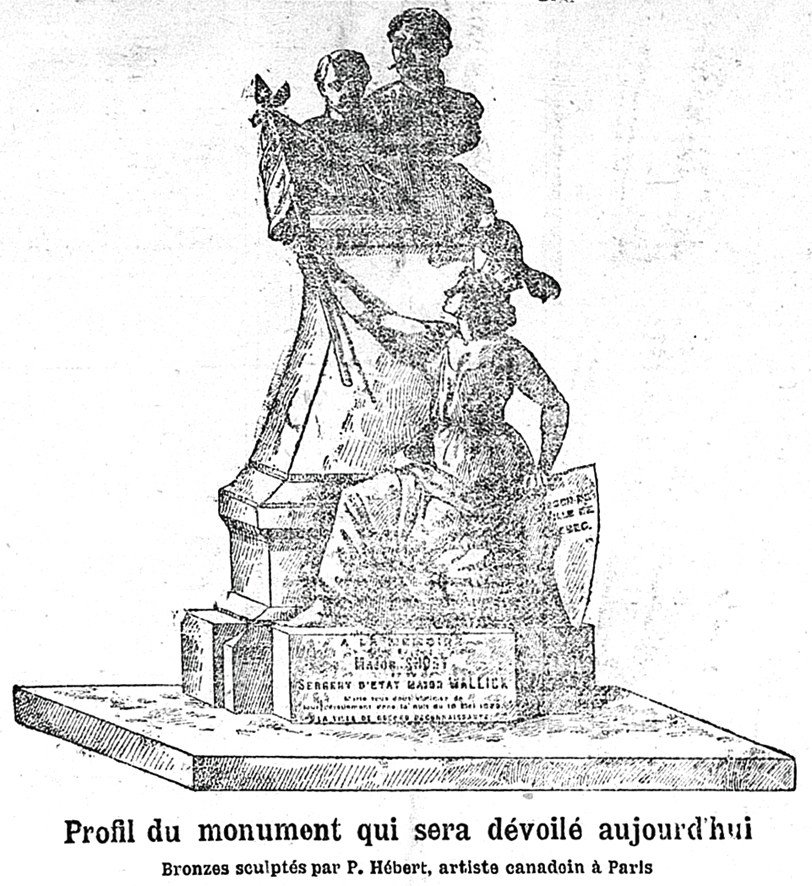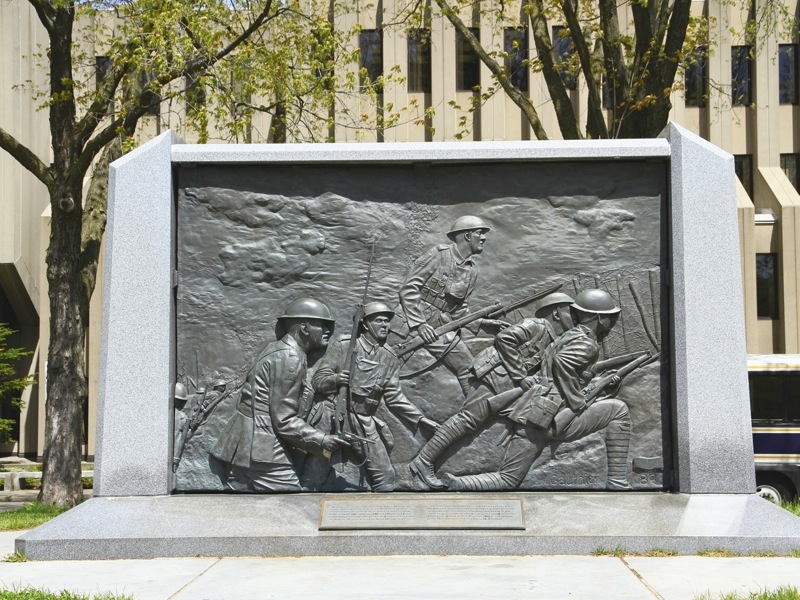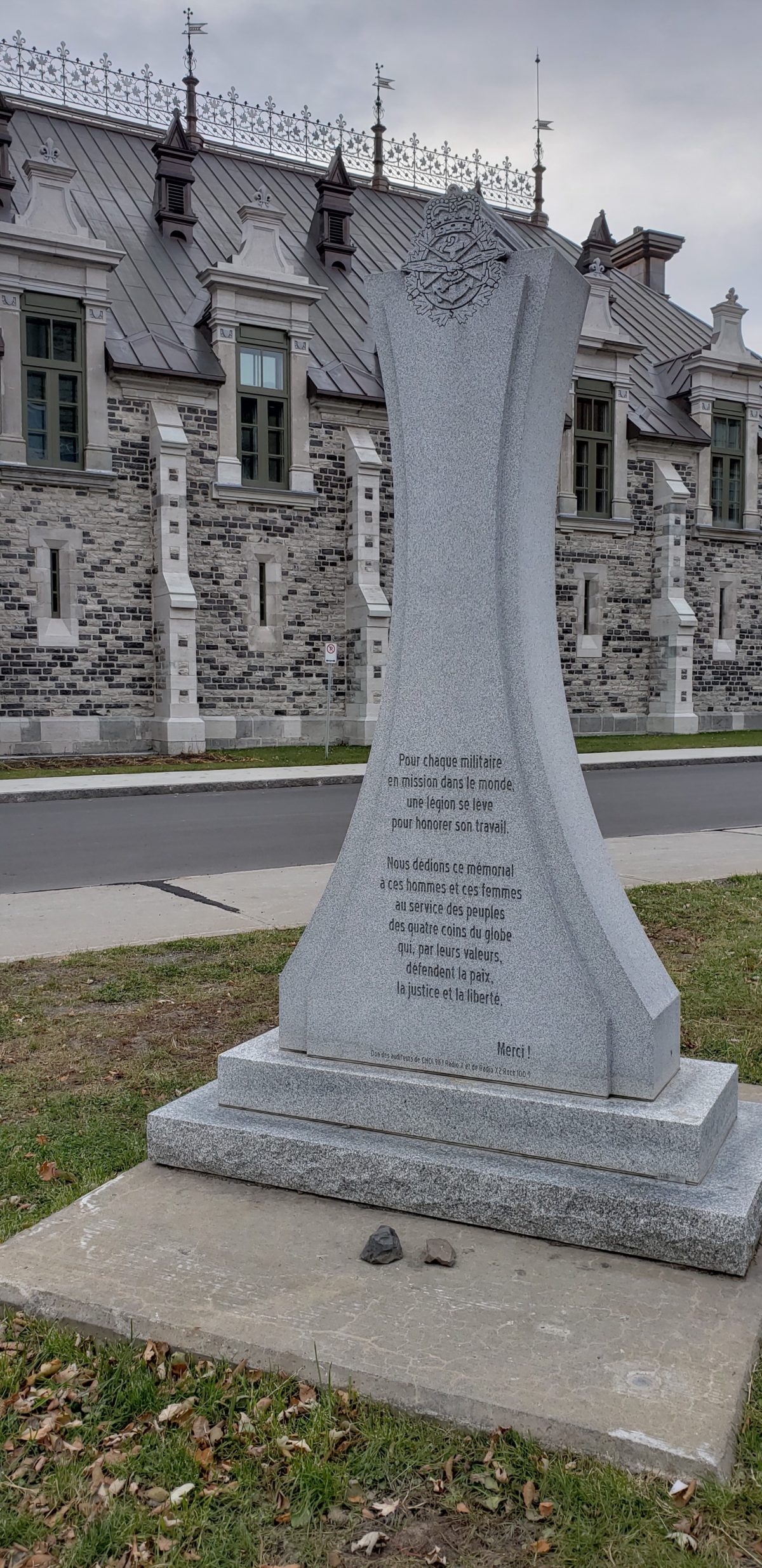05 November 2018
Monuments in Place George-V across from the Armoury

Just across from Voltigeurs de Québec Armoury is Place George-V, used by the Voltigeurs regiment as its parade ground. The site was named in 1917 in honor of King George V, who ruled over the United Kingdom and its dominions from 1910 to 1936. His reign was marked by events that included the First World War and the creation of the Commonwealth. Four commemorative monuments honoring the role of Québec soldiers stand proudly in the square. Read on to learn more about the stories and significance of these monuments, which have plenty to tell us about the history and heritage of Québec City and its inhabitants.
The oldest is the Short-Wallick Monument, created by Québec sculptor Philippe Hébert in 1891. It pays tribute to Major Charles John Short and Sergeant George Wallick, two soldiers who perished fighting the fire of May 15 and 16, 1889, in the Lower Town neighborhood of Saint-Sauveur. The disaster destroyed more than 400 houses but would have been far worse had the garrison not intervened. To stop the fire from spreading, the soldiers blew up a handful of houses to create a firewall. Short and Wallick were killed when a barrel of powder exploded as they were inspecting it.

The monument was unveiled on November 12, 1891. The busts of the two soldiers are sculpted in the round, while a woman carved in high relief and representing Québec City holds a flag out to them in a gesture of gratitude. Her left hand is resting on a shield adorned with Québec City’s first emblem, as designed by artist Joseph Légaré in 1833. Thus personified, the city and her people pay homage to the two heroes. For more than a century, this was the only monument in Place George-V.
The second commemorative structure, the “Je me souviens” Monument, is dedicated to the Royal 22e Régiment. It is a grey granite wall measuring 6 feet (1.83 m) high by 9 feet (2.74 m) wide. On the wall is a bronze bas-relief created by sculptor André D. Gauthier depicting five soldiers in action. The scene was inspired by A.T.J. Bastien’s painting “Over the Top.” Unveiled on November 11, 1989, this monument commemorates the 75th anniversary of the Royal 22e Régiment, revealing the identity of the soldiers from the regiment who died in action. The names of those who lost their lives in the two World Wars (1914–1918 and 1939–1945) and the Korean War (1950–1953) are engraved on the wall.


The Voltigeurs de Québec Monument was unveiled September 4, 1990. The work of sculptor Raoul Hunter, this bronze statue was erected to honor the Battalion of the Voltigeurs de Québec, the oldest French-Canadian troop, formed in 1862. The monument commemorates military interventions by the Voltigeurs, from the Second Fenian Invasion of 1866 to their missions with the UN. It depicts a rifleman, his weapon in a bandolier, wearing the characteristic cap worn by soldiers sent to restore peace at the time of the 1885 North-West Rebellion with the Métis.

Interestingly, the pedestals of the Short-Wallick, Royal 22e Régiment, and Voltigeurs de Québec monuments are made of grey granite from the Stanstead and Beebe quarries in the Eastern Townships. The slight greenish tinge on the granite comes from streaks caused by bronze corrosion.
In 2010 a fourth memorial, the Monument to Bravery, dedicated to the men and women who served in Afghanistan and around the world, was erected in Place George-V. The following words, in uppercase letters, are engraved on the sanded granite:
For each soldier on mission throughout the world, a legion rises to honour its work. We dedicate this memorial to those men and women who serve all nations around the globe, upholding their values to promote peace, justice and freedom while risking their own lives.
The Monument to Bravery was made possible thanks to a campaign organized by radio station CHOI 98.1 and supported by some 12,000 listeners. It was inaugurated on October 29, 2010, in the presence of hundreds of veterans, soldiers, and their families.

Even today, Place George-V is one of Québec City’s most important military memorial sites. Because the monuments are in a public place, and not within the confines of a military facility, everyone can visit them and ponder what they stand for. Place George-V and its monuments reflect the current generation’s desire to honor courage and dedication.